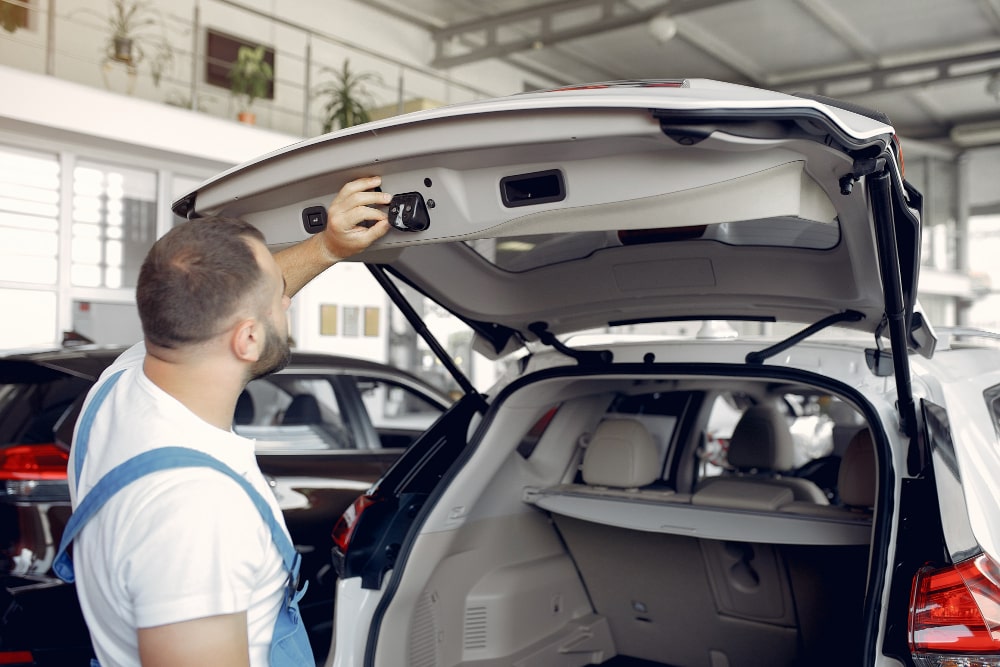One of the many requirements for glass design in autos is safety. According to Auto Glass Tulsa OK in addition to having to selectively transmit light to enable drivers to see clearly without straining and to keep the inside cool on hot, sunny days, the glass must be optically clear to give drivers and passengers an undistorted vision of their surroundings. To withstand strong gusts and small stone hits when traveling on a highway, it must be robust. In particular, sunroofs and windshields need to be physically sturdy to support the cabin frame and keep the roof from buckling during rollovers and injuring occupants.
Auto Glass
In the unlikely event that the glass breaks, the shards ought to stay inside the window frame or shatter into tiny, rounded bits rather than huge, sharp fragments that could injure or kill the inhabitants. To optimize fuel efficiency, the glass must also be as light as possible, regulate cabin acoustics for comfort, and offer a range of tints and hues for privacy and aesthetics.
Tempered glass for security
Particularly in high-speed crashes where glass can fly inside the cabin or people can be flung against broken windows, broken glass can be fatal. Because of this, automakers incorporate two kinds of safety glass into their vehicles. Glass for side and rear windows is typically tempered, or heat-treated, specifically for this purpose. All laminated glass windshields are composed of a glass-polymer sandwich construction.
Composition of glass
Soda-lime glass is what’s used in cars, trucks, and buses, just as the glass used to make bottles, jars, and regular building windows. It is the most prevalent kind, making up around 90% of all glass that is produced.
- The primary components of the material are calcium carbonate (limestone), sodium carbonate (soda ash), and sand, which is a rich source of silica. To create glass, producers mix the raw materials and feed them into a furnace that raises the temperature to above 1,500 °C. The molten material is then formed into bottles or other goods while it cools.
- Iron oxide, a tinting additive that gives glass a greenish hue, may also be included in the soda-lime glass recipe for automotive use. According to Heitz, the hue lessens light transmission into the cabin. In bright sunlight, this reduction facilitates the driver’s ability to see the road well. By suppressing infrared (IR) wavelengths, the hue also contributes to keeping the interior cool, according to him. Cooler interiors minimize the need for air conditioning, which lowers carbon dioxide emissions and fuel consumption in gas and diesel-powered cars while increasing the driving range of electric vehicles.
- Technical experts suggest that coating windshields and sunroofs with metal films is a more sophisticated but extremely effective technique to control light and heat in the interior.
- Glassmakers frequently use this process to sputter one or more nanometer-thin films of silver, separated by layers of metal oxides like titanium dioxide or tin oxide. The optically designed structure minimizes cabin heating without sacrificing visibility by aggressively reflecting infrared wavelengths due to the thinness of the stacks.
Recycling difficulties
Glass doesn’t lose quality when recycled again, so it can be used to make windows, containers, and other things. The process of recycling most glass involves crushing it into a cullet, filtering it, and sorting it color-coded, then mixing the cullet with sand and other raw materials, which are melted in a furnace to create new glass. This method of using a cullet lowers the raw material requirements for glass makers.
- Additionally, it uses less energy to maintain the furnace’s temperature at a level high enough to produce molten glass, which minimizes greenhouse gas emissions, operating expenses and controls the price of glass.
- Glass recyclers crush clean, sort, and export furnace-ready cullet to manufacturers, processing tempered window glass like that of container glass.
- However, the same qualities that make windshields durable and secure also make recycling them challenging. According to Nelson, the glass is purposefully attached tightly to the rubbery PVB sheet, maintaining its adhesion even after breaking. Thus, even though glass recyclers handle millions of metric tons of container glass every year, they have hardly recycled windshields in the past.
Windshield laminates
Manufacturers cut sheets of soda-lime glass, about 2.5 mm thick, then shape them in a furnace to suit the curved windshield frame of an automobile to create laminated windshields. After that, they fuse the glass and PVB film in an autoclave a hot, pressurized vessel. The process wets the glass surface completely with the PVB.
- Windshield toughness is also influenced by chemical composition. In the beginning it is composed of a laminated combination of regular soda-lime glass on the outside and a thin layer of Gorilla Glass, an aluminosilicate material that has been chemically reinforced, from Corning on the inside of the vehicle.
- The mechanism behind Gorilla Glass’s strengthening is ion-exchange chemistry, which results in some of the sodium ions in a thin surface layer being replaced by potassium ions. Due to its larger size than sodium, potassium creates compressive forces that harden the surface of glass by erecting barriers that stop cracks from spreading.
It’s always better to connect with Auto Glass Tulsa OK to learn more about Auto Glass.

